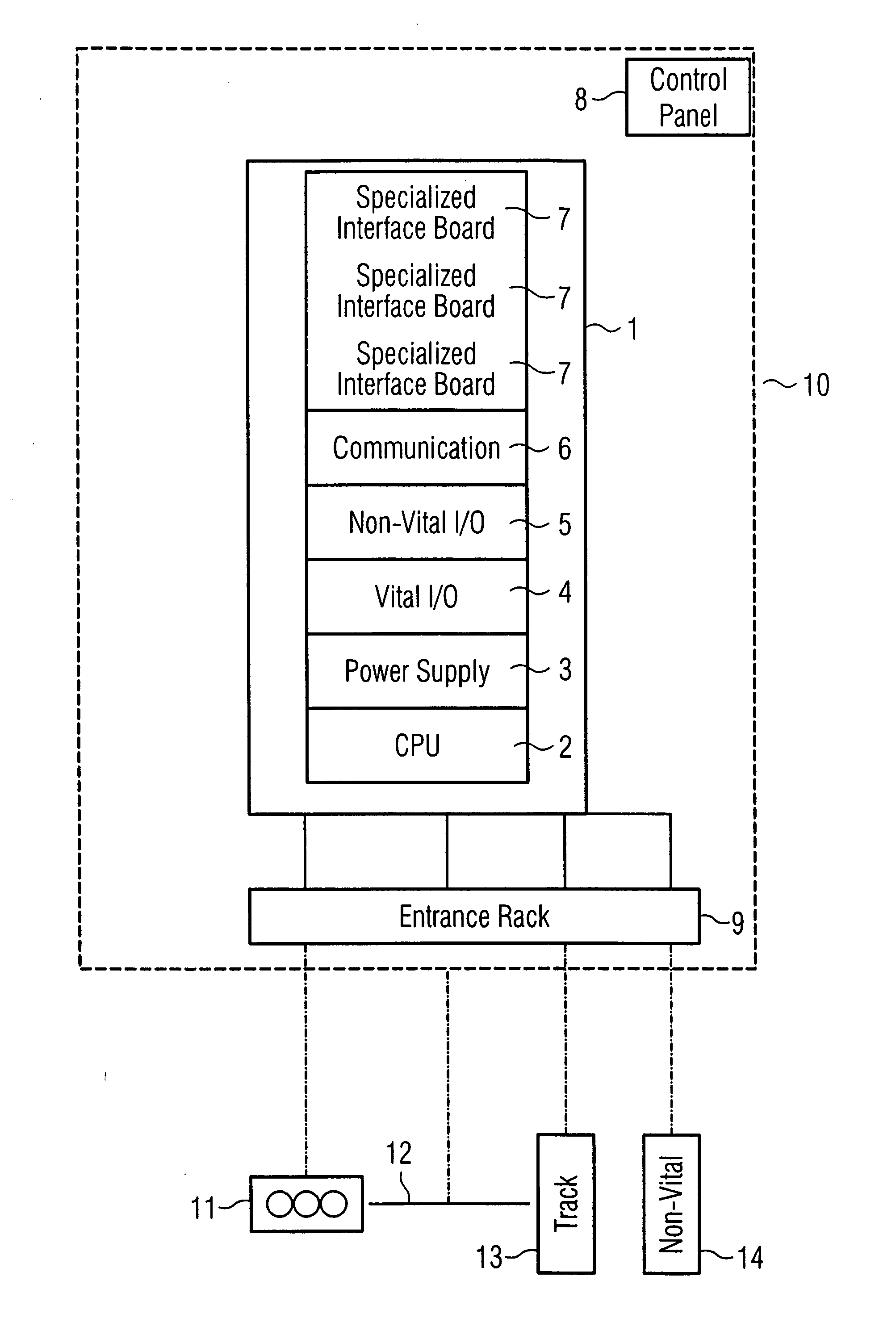System architecture for controlling and monitoring components of a railroad safety installation
a technology for safety installations and system architectures, applied in process and machine control, vehicle position/course/altitude control, instruments, etc., can solve problems such as high investment and high risk of system failures
- Summary
- Abstract
- Description
- Claims
- Application Information
AI Technical Summary
Benefits of technology
Problems solved by technology
Method used
Image
Examples
Embodiment Construction
[0011]FIG. 1 shows a block diagram, illustrating the use of an automation platform for a railroad safety installation. The automation platform 1 in this case essentially comprises a CPU 2, a power supply 3, a module for safety-relevant signal processing 4, a module for non-safety-relevant signal processing 5, and a communication module 6. These modules 2 to 6 in their own right offer significant basic functions for control and monitoring of components of the railroad safety installation, in which case necessary adaptations are possible relatively easily by means of the modular configuration. The appropriately adapted modules 2 to 6 as well as further interfaces 7 together with a control panel 8 and appropriate connections 9 for components of the external installation form the major functional units of a signal box 10. The connections 9 are connected to the components of the railroad safety installation to be controlled and to be monitored, with the figure illustrating, by way of exa...
PUM
 Login to View More
Login to View More Abstract
Description
Claims
Application Information
 Login to View More
Login to View More - R&D
- Intellectual Property
- Life Sciences
- Materials
- Tech Scout
- Unparalleled Data Quality
- Higher Quality Content
- 60% Fewer Hallucinations
Browse by: Latest US Patents, China's latest patents, Technical Efficacy Thesaurus, Application Domain, Technology Topic, Popular Technical Reports.
© 2025 PatSnap. All rights reserved.Legal|Privacy policy|Modern Slavery Act Transparency Statement|Sitemap|About US| Contact US: help@patsnap.com


